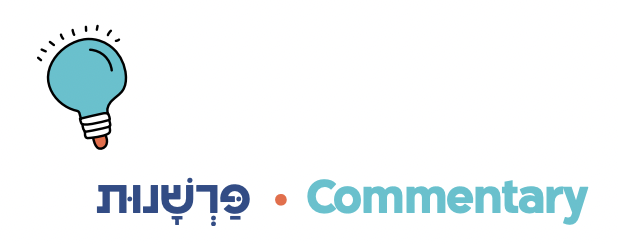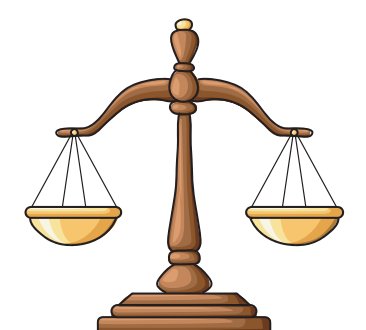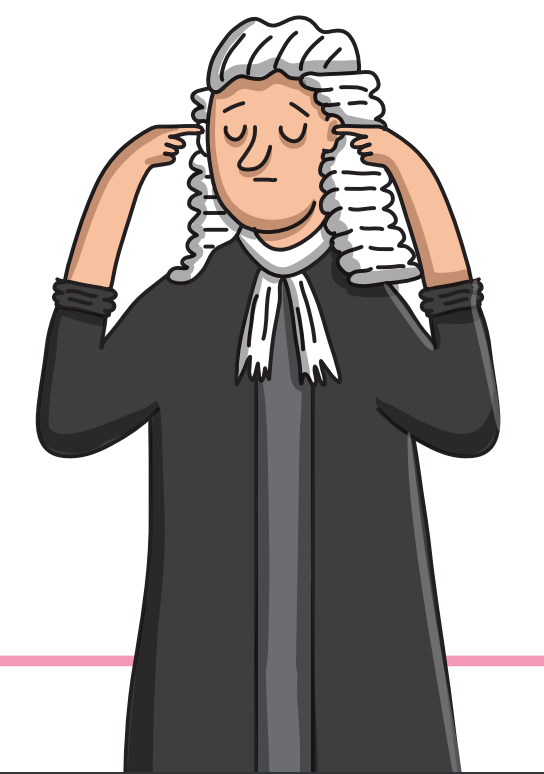Illustration Credit: Elad Lifshitz, Dov Abramson Studio

Commentary פַּרְשָׁנוּת

(טז) וָאֲצַוֶּה֙ אֶת־שֹׁ֣פְטֵיכֶ֔ם בָּעֵ֥ת הַהִ֖וא לֵאמֹ֑ר שָׁמֹ֤עַ בֵּין־אֲחֵיכֶם֙ וּשְׁפַטְתֶּ֣ם צֶ֔דֶק בֵּֽין־אִ֥ישׁ וּבֵין־אָחִ֖יו וּבֵ֥ין גֵּרֽוֹ׃
I commanded your judges at that time as follows, “Hear between your brothers, and judge fairly between people, and brothers, and strangers.”
What is the meaning of the words שָׁמֹעַ בֵּין (shamoa bein, hear between)?
אָמַר רַבִּי חֲנִינָא אַזְהָרָה לְבֵית דִּין שֶׁלֹּא יִשְׁמַע דִּבְרֵי בַּעַל דִּין קֹדֶם שֶׁיָּבֹא בַּעַל דִּין חֲבֵרוֹ, וְאַזְהָרָה לְבַעַל דִּין שֶׁלֹּא יַטְעִים דְּבָרָיו לַדַּיָּן קֹדֶם שֶׁיָּבֹא בַּעַל דִּין חֲבֵרוֹ.
R.Hanina says this is a warning to a court that it may not hear the statement of one litigant before the other litigant comes, and it is a warning to litigants that they may not explain their case to a judge before the other litigant arrives.
ושָׁמַעְתִּי מִפִּי חָכָם גָּדוֹל חָסִיד וְגָדוֹל בְּיִשְׂרָאֵל חָבִיב עָלַי כְּרוּחִי הָרַב ר' מֹשֶׁה בִּירְדּוּגוֹ זִכְרוֹנוֹ לְחַיֵּי הָעוֹלָם הַבָּא, שֶׁהָיָה מְדַקְדֵּק בִּשְׁעַת הַדִּין שֶׁיִּהְיוּ עֵינָיו לְמַטָּה, וְלֹא הָיָה נוֹשֵׂא עֵינָיו כָּל עִקָּר. וְשֶׁהָיָה מַרְגִּישׁ שֶׁאִם הָיָה נוֹשֵׂא עֵינָיו לְצַד הַהֻכְרַח בְּאֵיזֶה אֶחָד מִבַּעֲלֵי הַדִּין הָיָה מִתְבַּלְבֵּל שֶׁכְּנֶגְדּוֹ, וְהוּא אֲמָרוֹ "שָׁמֹעַ בֵּין אֲחֵיכֶם" - שֶׁלֹּא יַעֲשׂוּ אֶלָּא הַשְּׁמִיעָה.
I heard from the wise, pious, and great R. Moshe Berdugo, that he would be careful when judging a case to only look downwards. He felt that if he looked at either one of the litigants, it would confuse the other (because it would feel like they’re not getting the same attention). This is how he understood “Hear between your brothers” — that judges should only use hearing.

-------------------





